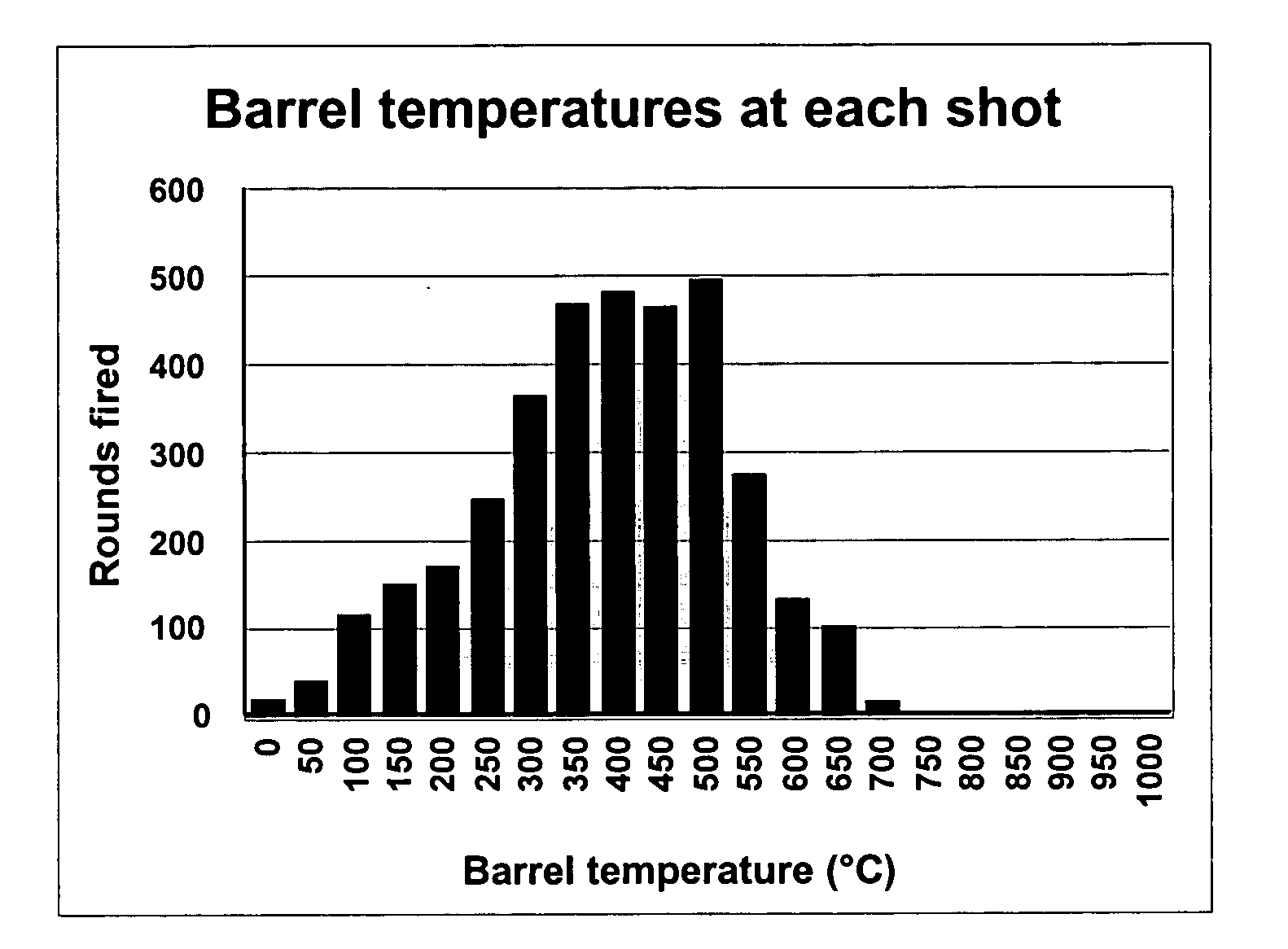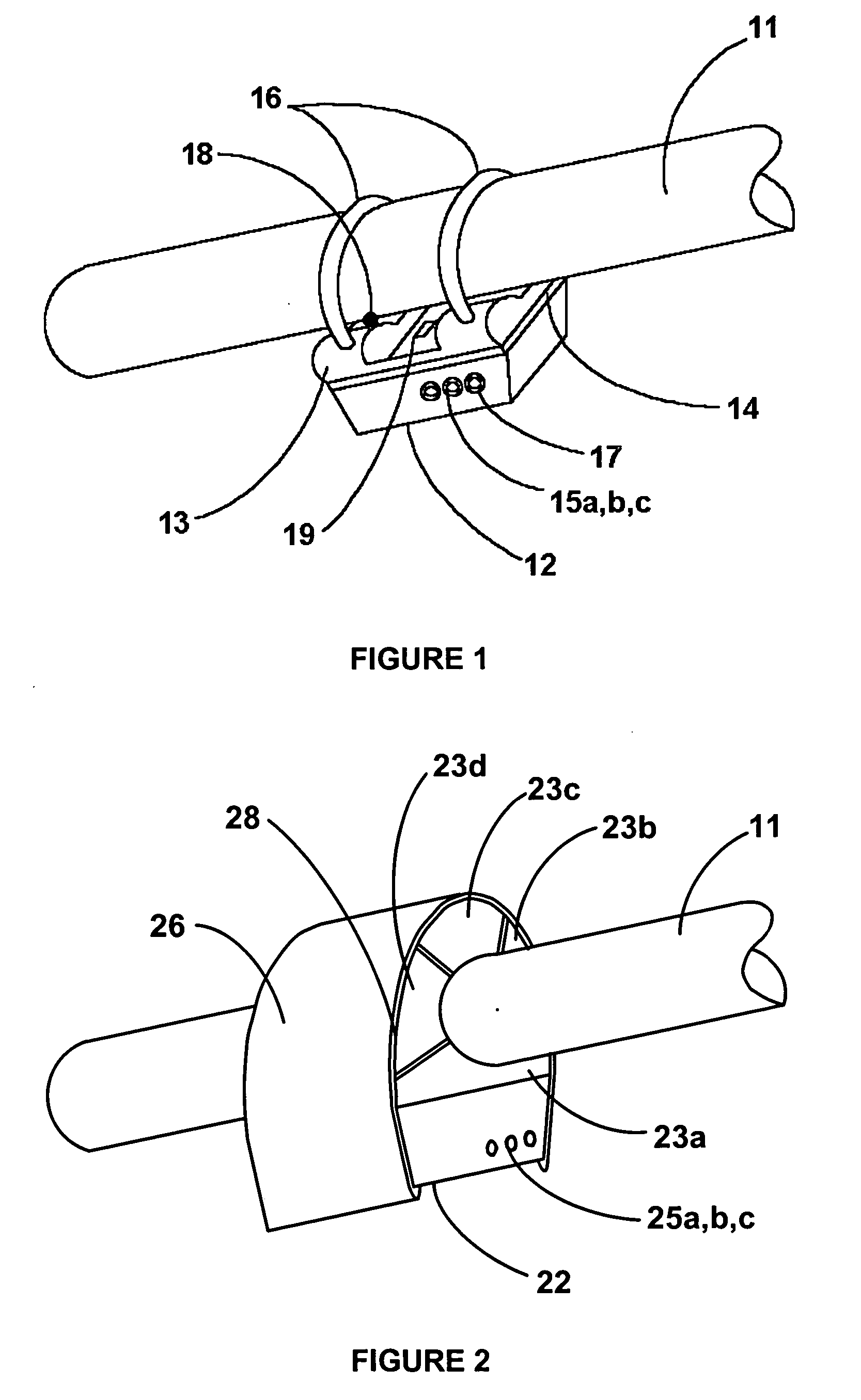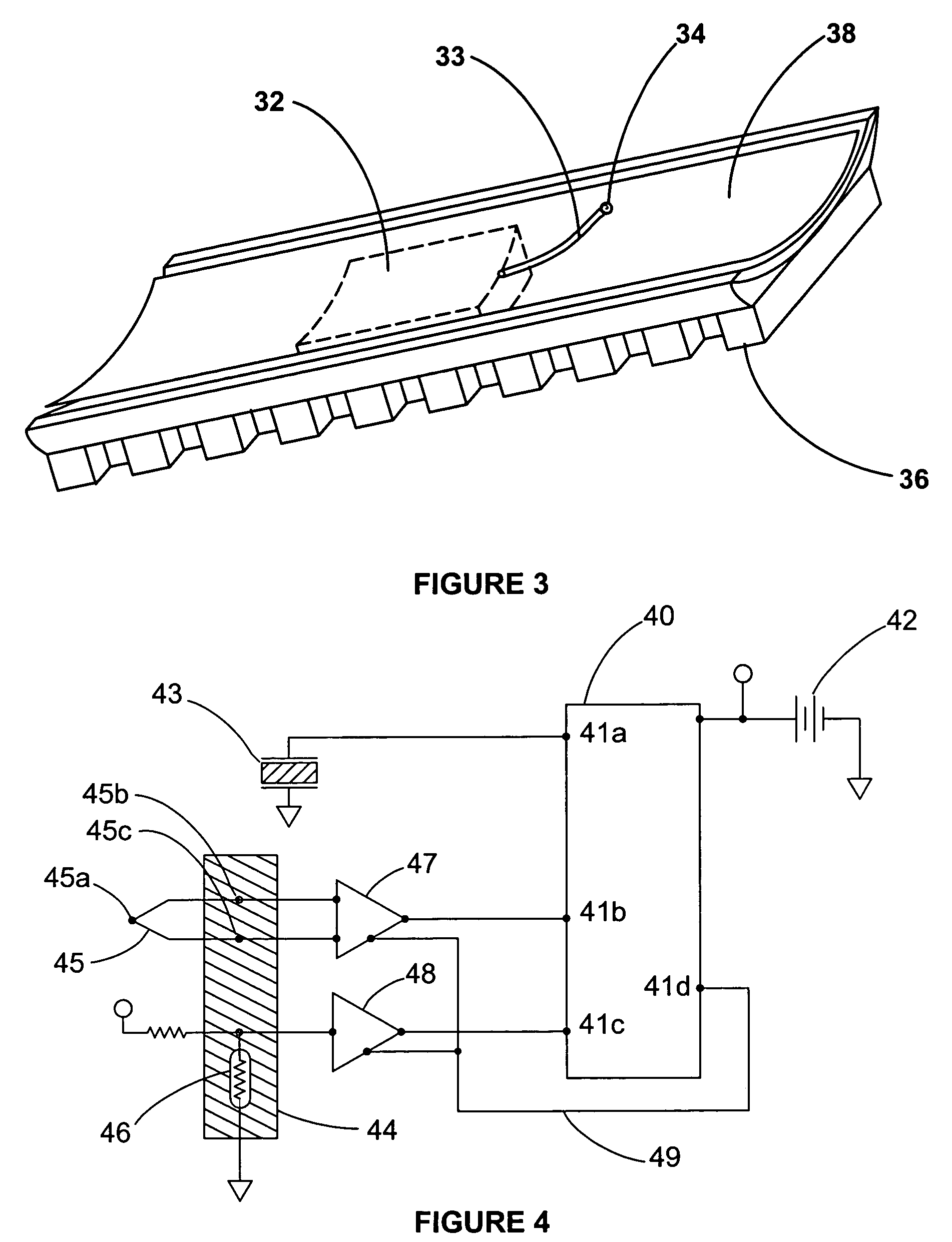Device for collecting statistical data for maintenance of small-arms
a technology for collecting statistical data and small arms, which is applied in the direction of measuring explosion force, force/torque/work measurement, instruments, etc., and can solve the problems of bursting of the barrel, no information can be provided that can be related to the and gradual wear of the barrel or the internal
- Summary
- Abstract
- Description
- Claims
- Application Information
AI Technical Summary
Benefits of technology
Problems solved by technology
Method used
Image
Examples
first embodiment
[0037] the invention utilizes a “hold-off delay” technique to sense shots fired by the firearm, and avoid miscounts due to extra impulses generated by the firearm during firing. A signal threshold is used to distinguish between signals which represent shots and extraneous impulses due to knocking the weapon against other objects or the like.
[0038] In one embodiment of the invention, the shot counter of the invention is mounted to the barrel of the firearm. Since it is preferable to measure the barrel temperature during firing, if the shot counter is to accumulate data on this parameter, it must have a thermal sensor be in thermal communication with the barrel. This is preferably done by having the shot counter itself mounted to the barrel.
[0039] However, during heavy firing of an automatic weapon the gun barrel can reach temperatures of 400° C. or higher. Most commercial electronics are designed to operate at temperatures no higher than 125° C. and eutectic tin-lead solders melt at...
case 12
[0042] Case 12 may be attached to insulator 13 by any means that does not form an efficient thermal conduction path. A high-temperature silicone adhesive 14 is preferred as this class of material can withstand temperatures of over 400° C., has excellent adhesion to most materials and is resistant to attack by most common solvents. Useful alternate adhesives include cyano-acrylates and high-temperature epoxies. Mechanical fasteners with low thermal conductivity, for example ceramic or stainless steel machine screws, can also be used.
[0043] A thermocouple can be used as the temperature sensor. This may be embedded within the contact surface of insulator 13 with the bead 18 positioned so that it will contact the barrel 11. Alternatively a spring or compliant material can be used to maintain the thermocouple bead in contact with the barrel. If an infrared device 19 is used it is sufficient to provide a path for thermal radiation to reach the detector.
[0044] The shot counter case 12 is ...
PUM
 Login to View More
Login to View More Abstract
Description
Claims
Application Information
 Login to View More
Login to View More - R&D
- Intellectual Property
- Life Sciences
- Materials
- Tech Scout
- Unparalleled Data Quality
- Higher Quality Content
- 60% Fewer Hallucinations
Browse by: Latest US Patents, China's latest patents, Technical Efficacy Thesaurus, Application Domain, Technology Topic, Popular Technical Reports.
© 2025 PatSnap. All rights reserved.Legal|Privacy policy|Modern Slavery Act Transparency Statement|Sitemap|About US| Contact US: help@patsnap.com



